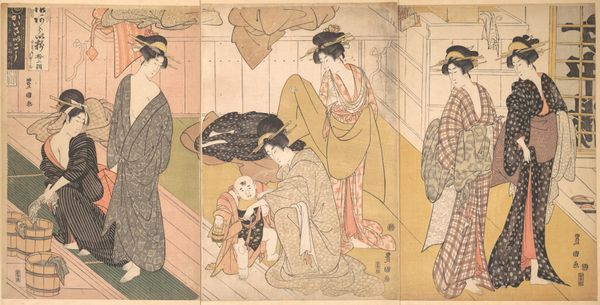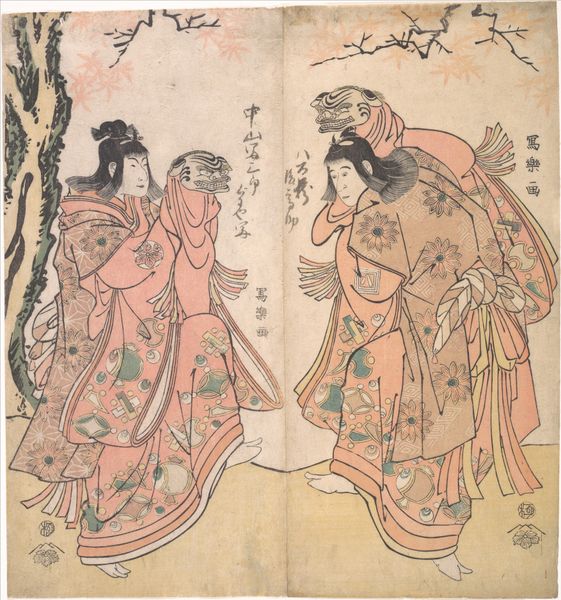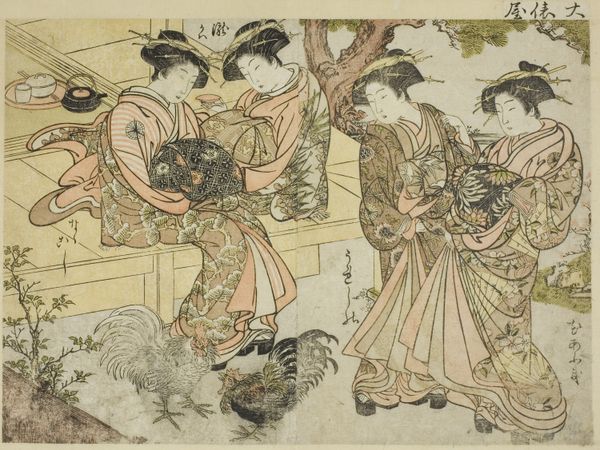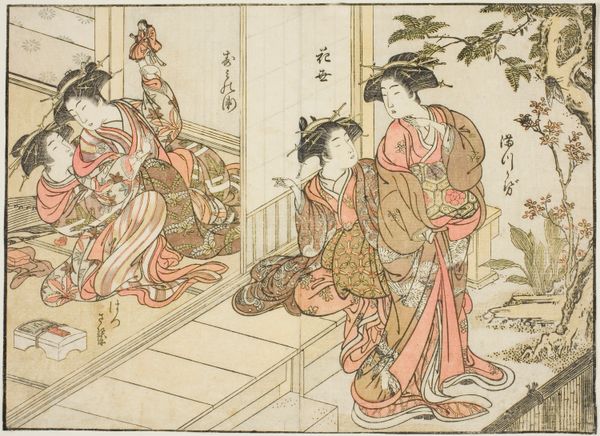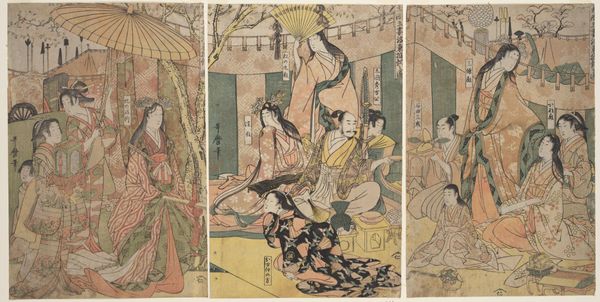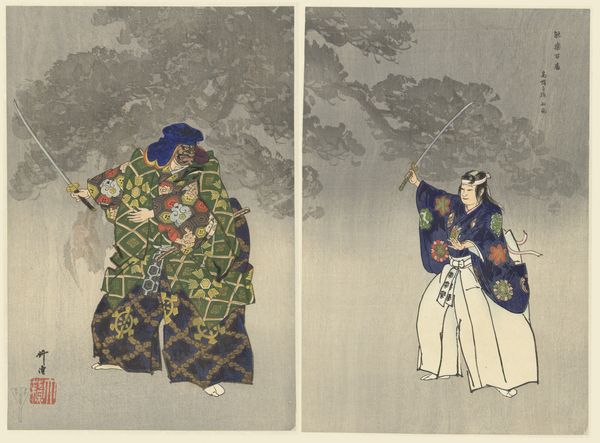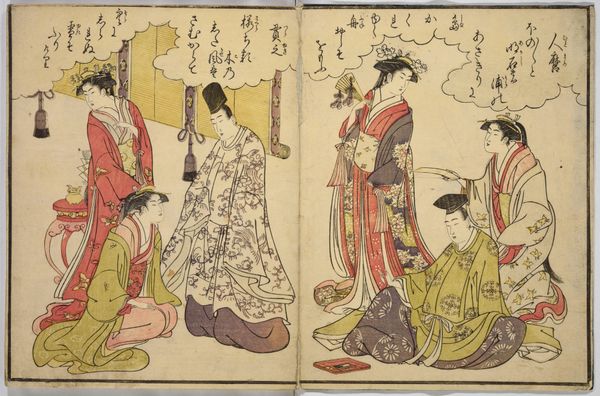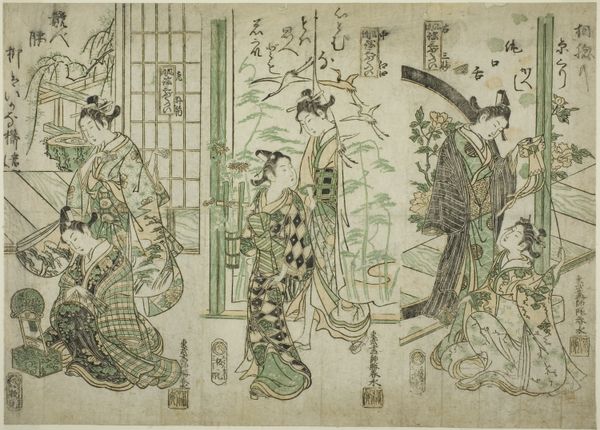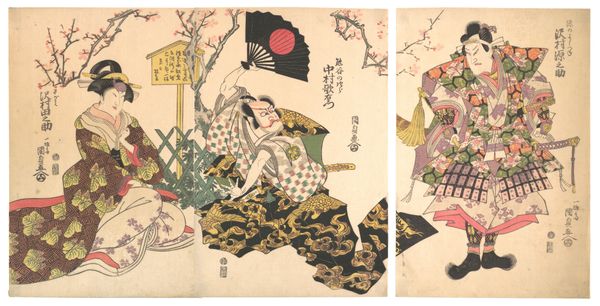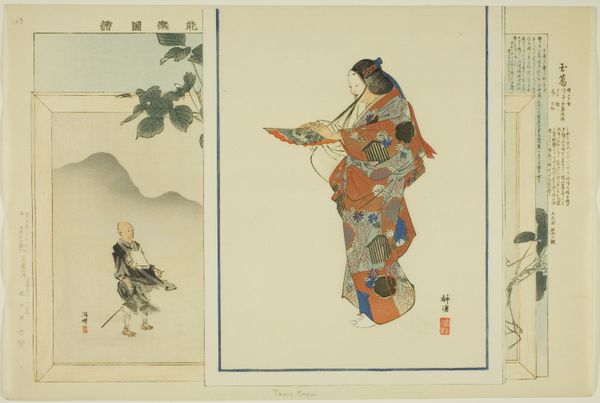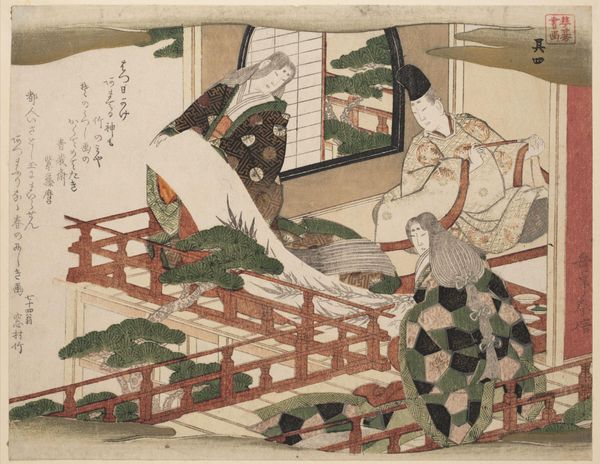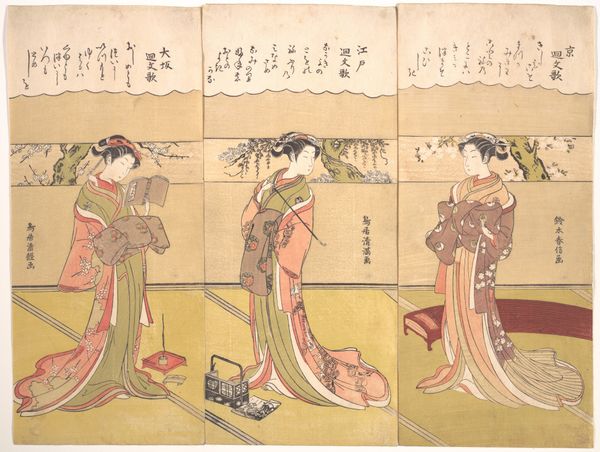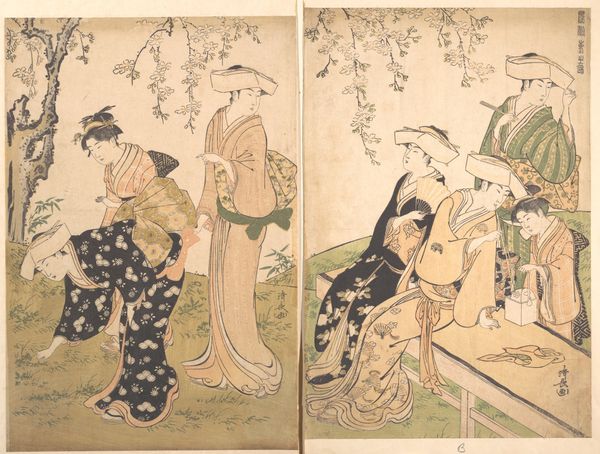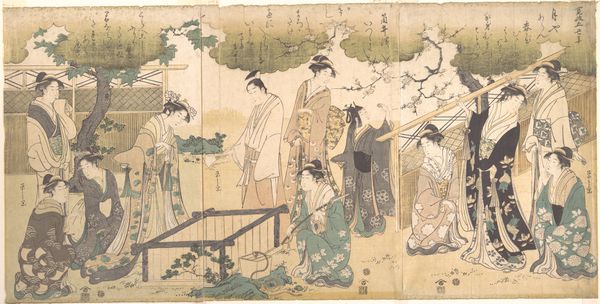
Actors Yamashita Kinsaku IV as Kumagai's wife Sagami (R) and Nakamura Shikan II as Kumagai Jirō Naozane (L) c. 1833 - 1837
0:00
0:00
print, ink, woodblock-print
#
portrait
# print
#
ukiyo-e
#
japan
#
figuration
#
ink
#
woodblock-print
Dimensions: 13 3/4 × 9 13/16 in. (34.93 × 24.92 cm) (image, sheet, vertical ōban, each)
Copyright: Public Domain
Editor: So, this is Utagawa Kunisada's "Actors Yamashita Kinsaku IV as Kumagai's wife Sagami (R) and Nakamura Shikan II as Kumagai Jirō Naozane (L)," a woodblock print from around 1833-1837. I'm struck by how the actors' robes completely dominate the composition, almost flattening the image. What do you make of this print? Curator: Well, first, it’s important to remember Utagawa Kunisada operated in a rigidly patriarchal society, reflected in the Kabuki theatre itself. The representation of gender through clothing in Ukiyo-e prints is rarely a simple aesthetic choice; instead, it is encoded with cultural values that either subvert or support existing social structures. We can analyze Sagami, Kumagai's wife, for visual cues about her position in society and the expectations placed upon women of her status during that period. The way she is depicted invites a conversation around female representation and performance. What do you notice about her posture, expression and relation to her husband? Editor: She looks resigned, almost defeated. While the male figure gestures assertively, hiding his face partially, the female figure seems static and accepting. It feels very gendered. Curator: Exactly! It reflects the performative aspects of gender in 19th-century Japan and the lack of agency afforded to women. We can explore how color and patterns emphasize the power dynamic at play. Look at the decorative program embedded within each figure and compare it with its Western counterparts to discuss Orientalism and exoticism. What do you observe about how women were (and still are) objectified or exoticized through the medium of Ukiyo-e prints? Editor: The positioning does emphasize this perceived contrast... Almost like an illustration of traditional gender roles. Curator: It’s fascinating how much we can unpack from just one print! The careful observation of even what appear as simple robes tells us so much about society's ideas concerning identity and the performance of identity, in a given historical period. Editor: It definitely reframes my understanding; seeing art as embedded with societal critiques makes it that much more compelling.
